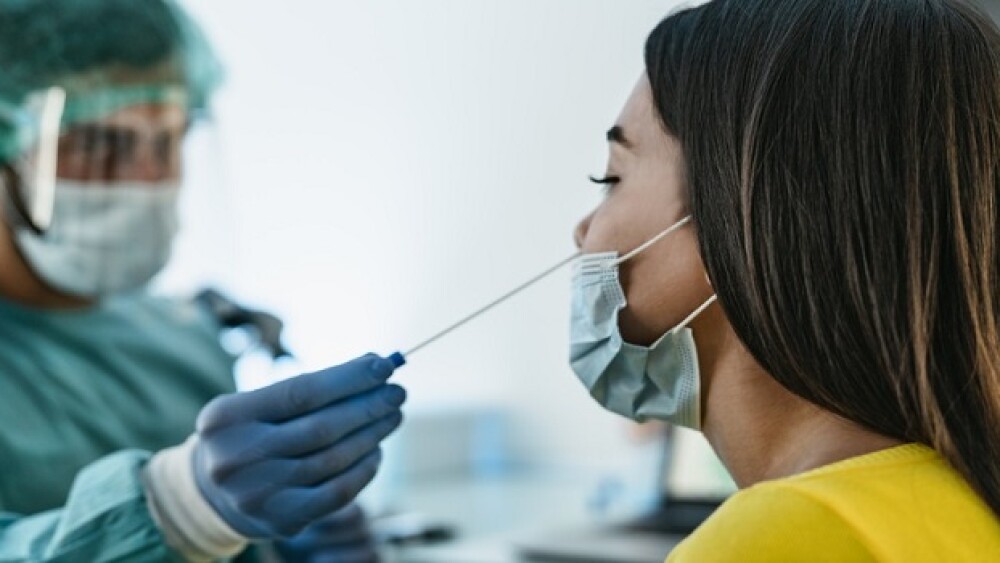Although COVID-19 appears to be on the run in the U.S., there is still a threat of resurgence. Here’s a look at some of the most recent COVID-19 stories and research.
Although COVID-19 appears to be on the run in the U.S., there is still a threat of resurgence. Here’s a look at some of the most recent COVID-19 stories and research.
New Omicron Subvariants Escape Protection of Vaccines
A study out of Beth Israel Deaconess Medical Center of Harvard Medical School found that new Omicron subvariants BA.4 and BA.5 seem to evade antibody responses of people who are fully vaccinated and boosted, as well as people who had previous COVID-19 infections. Vaccination appears to still offer significant protection against severe disease, however.
“We observed 3-fold reductions of neutralizing antibody titers induced by vaccination and infection against BA4 and BA5 compared with BA1 and BA2, which are already substantially lower than the original COVID-19 variants,” Dr. Dan Barouch, author of the paper and director at the Center for Virology and Vaccine Research at Beth Israel Deaconess, said in a statement.
Another study out of Israel and published in Clinical Infectious Diseases found that hospitalized Omicron patients benefited from a fourth vaccine dose of the Pfizer-BioNTech shot and generally had better outcomes than the unvaccinated. The study largely included people of similar age and immune compromise profiles.
Long COVID Affects 1 in 5 U.S. Adults Who Contract Covid
A June survey by the U.S. Census and the U.S. Centers for Disease Control and Prevention found that about one in five U.S. adults who had COVID-19 are currently experiencing symptoms of Long COVID. The symptoms persist for at least three months. More than a third of U.S. COVID-19 patients have reported ever having Long COVID symptoms, with 19% claiming to be currently experiencing symptoms. Symptoms include fatigue, brain fog, respiratory problems, pain and other issues.
In a related story, a study published in The Lancet Child & Adolescent Health found that children can experience COVID-19 symptoms for at least two months, but the indirect effects of the pandemic probably have a bigger impact. The study was conducted in Denmark and was designed to help parents, physicians and policymakers better understand the risks for children. For example, in children 12 to 14 years of age, quality-of-life scores were higher, while reports of anxiety were lower for the kids who tested positive for COVID-19. The researchers suggest that’s probably because the children who hadn’t been exposed to the virus “experienced fear of the unknown.”
Most Pharmacies Can’t Give Kids COVID-19 Vaccines
The vast majority of COVID-19 vaccines given in the U.S. have been through retail pharmacies. However, now that the U.S. Food and Drug Administration and CDC have authorized shots for children under five, parents are finding that in most states, pharmacists can’t dose kids. Many states, for example, in the Northeast, don’t allow pharmacists to give shots to children under the age of 18, while other states place restrictions on ages 6 to 14.
“It’s been a process for the past 30 years to get pharmacists immunization administration authority,” Allie Jo Shipman, director of state policy at the National Alliance of State Pharmacy Association, said. “It depends on the state, and a lot of it is political.”
The policies were amended in June 2021 by the federal Public Readiness and Emergency Preparedness (PREP) Act. This temporarily lets pharmacists order and give vaccines to children over 3 during a public health emergency. There appears to be variation depending on the pharmacy. Walgreen’s, for example, indicates patients must be 3 or older. CVS says children must be 5 and over in certain locations, and those under 5 are directed to the MinuteClinic website. The youngest age group the MinuteClinic will vaccinate is 18 months.
The Biden administration has made at least 10 million doses available to states, according to The New York Times. The best access is via your pediatrician.
Moderna Expects Vaccine Targeting Omicron to be Shipped in August
On Wednesday, Moderna announced new clinical data on its bivalent COVID booster candidate that includes a new vaccine targeting Omicron. The booster increased neutralizing titers against BA.4/BA.4 by 5.4-fold above baseline regardless of prior infection and by 6.3-fold in the subset of seronegative patients.
Moderna CEO Stephane Bancel said, “We will submit these data to regulators urgently and are preparing to supply our next generation bivalent booster starting in August, ahead of a potential rise in SARS-CoV-2 infections due to Omicron subvariants in the early fall.”
COVID-19 Rebound After Paxlovid may be From Insufficient Drug Exposure
It was noted that some COVID-19 patients who received Pfizer’s antiviral drug Paxlovid had a rebound of the disease. A study published in Clinical Infectious Diseases suggests that the rebound is likely from receiving insufficient amounts or exposure to the drug. The authors of the study were concerned that the coronavirus was developing resistance to Paxlovid, but that does not appear to be the case. After receiving the drug and rebounding, the virus still appeared sensitive to the drug and didn’t demonstrate any mutations that would confer resistance.
“The goal of Paxlovid is to prevent serious illness and death, and so far no one who has gotten sick again has needed to be hospitalized, so it’s still doing its job,” senior author Dr. Davey M. Smith, M.D., chief of Infectious Diseases and Global Public Health at UC San Diego School of Medicine and infectious disease specialist at UC San Diego Health, said in a statement.





